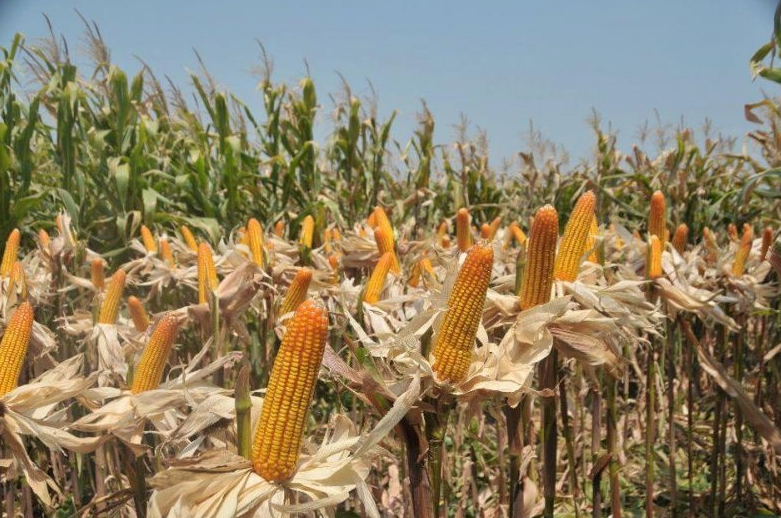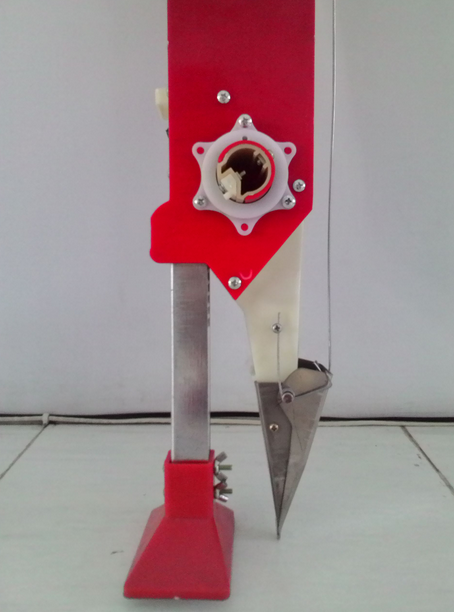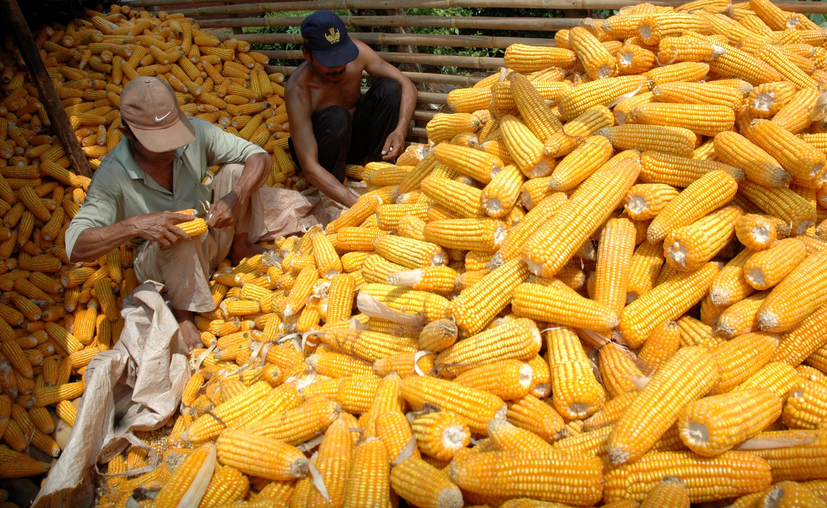
There are various ways to grow corn one of them by applying methods without tillage. Understanding without tillage here is the way of planting without the treatment of land preparation such as the reversal and the soiling of the soil first, only needed a hole to immerse the seed into the soil.
In developed countries planting without tillage usually use planter tools. While in Indonesia is usually enough to use a pointed wooden stick. a pointed wooden stick is needed to puncture the surface of the ground where the seed is planted.

Keep in mind how to plant maize without tillage this can not be applied in all types of land. Only land that has a certain degree of humor is suitable for this method. Hard ground can not apply the method without tillage.
Usually the method without tillage suitable to be applied in paddy fields, former rice plants that have been completed in the harvest. Can be applied in rain-fed fields and irrigated rice fields that want to apply crop rotation. Rice straw is very useful as a mulch for corn crops.
The advantages and disadvantages of the groundless method
How to grow corn with a method without tillage has advantages and disadvantages. Here are the advantages of using groundless methods:
- Shorten the cultivation time because farmers do not need to do soil processing first.
- Save on labor costs.
- Avoids soil damage, because too-often flipped and overgrown soils will be hardened in the long run. In addition, the land that is plowed or loosened will open, so there is potential loss of soil minerals.
- Reduce soil erosion of upper soil nutrients due to processing.
Meanwhile the lack of methods without tillage are:
- There is the possibility of soil has been overgrown with weeds that could interfere with plant growth.
- Since the land is not opened there is the possibility of remains of pests that still breed on the land, and can disrupt the growth of the next plant.
Land preparation
a. Preparation of straw mulch
- The necessary preparation step is land clearing. Clean the remaining rice straw from the field by chopping or chopping it. Then sprinkle evenly over the surface of the field. This straw is useful as ground cover mulch.
b. Drainage preparation
- Prepare the drainage on the land to be used. Drainage is made in a straight line with the distance between the segment about 2 meters. The purpose of making this drainage to remove excess water, because there is no soil treatment, such as raising beds. Do not let the land is submerged in water.
c. Weed cleaning
- Weeds become a quite disturbing factor in the landless method. If we use weeds weeds should apply weed cleaning with herbicides. If there are enough weeds, use a systemic herbicide that can eradicate weeds to the roots. Please use the herbicide brand that suits your needs (we did not mention the brand) and use it according to the recommended dosage.
After 3 days of re-control of the land, is there still weed or not. If there are still weeds do spraying again. A week after herbicide spraying, the land is ready for cultivation.
d. Fertilization and calcification
- If the former land used is less fertile, can be added addition of organic fertilizer. May be compost or manure. Fertilizer is sown in the array of arrays, corresponding to the planting hole line. The dosage of organic fertilizer for corn crop is about 1.5-2 ton per hectare. If necessary can do calcification, how to spread lime equal to the fertilizer in the form of array. Calcified dose is about 300-400 kg per hectare.
Stages of planting
a. Seed preparation
- Use a superior seed that has a success rate of more than 95%. Seed preparation should follow the advice of the seed producer. For corn seeds that are not from the manufacturer, the seeds can be prepared first by first soaking with insecticide. The seeds for the seeds are protected from the onslaught of illness. For plant-produced seeds are usually mixed with insecticides, seed appearance is usually red, so no need to immerse with insecticide.
b. Setting spacing
- Planting distance for corn plants in a row about 20 cm, while the distance between lines 70-75 cm. If the beds are made as wide as 2 meters, there will be at least 3 rows of corn crops in one bed.
c. Planting
- Seed planting can be done a maximum of a week after the application of organic fertilizer and liming. Planting hole made with planter machine. The depth of the planting hole is about 3-5 cm. Put 2 corn seeds in one planting hole. Then cover with the ground, the hides are solidified.
Also prepare seedbed seeds separately, use to embroider corn crops that fail to grow. In order to plant the results of embroidery has the same age with plants that have been planted in the field.
Check the seed growth after one week. Then embroidered seeds fail to grow with seeds that have been planted in separate places. Try embroidery done with plants that age.
d. Provision of additional fertilizer
- Additional fertilization is done 2-3 times in one planting period depending on the level of soil fertility and the type of seed used. Hybrid corn usually requires more fertilization than ordinary corn.
The type of fertilizer required by corn plants must satisfy the elements of N, P and K. The N element can be obtained from urea, the P element of SP-36 and the K element of KCl. The dose of fertilizer for maize cultivation based on Balitbangtan recommendations per hectare is 350 kg Urea + 200 kg SP-36 + 100 kg KCl.
When difficulty obtaining KCL, unusr K can be obtained from NPK fertilizer. With the following dosage, 400 kg NPK 15:15:15 + 270 kg urea + 80 kg SP-36 for each hectare. For two-time feeding frequency, give it 10 and 35 days after planting (hst). For the frequency of fertilization 3 times give at age 7-10 hst, 28-30 hst and 40-45 hst.
Irrigation
The easiest irrigation used for planting maize in paddy fields is by inundation system. The only flooded part of the drainage ditch is not the whole field. How to flow water to drainage channels that have been made. Let the water soak in the soil beds. After the soil looks wet, remove the water from the drainage channel.
There are 5 phases of corn plant growth that require irrigation, namely the initial growth phase, vegetative growth phase, flowering phase, seed filling phase and maturation phase.
Harvest and post harvest

Corn crops can be harvested about 100 HST, depending on the type of seed used. Physically maize ready for harvest is visible from the leaves dry, yellowish. Harvesting done before or after the physiology will result in the chemical composition of maize that determines its quality.
After harvest the corn must be dried first. The most common way of drying is by drying it in the fields together with its claws. Or can also peeled then dried corn on the floor or on the tarp.
Damage can still occur during the drying process, especially when the harvest is done in the rainy season. Wet corn is very susceptible to fungus or fungus attack. Mushrooms can damage crops by more than 50%.
Source: https://alamtani.com/cara-menanam-jagung/
Not indicating that the content you copy/paste is not your original work could be seen as plagiarism.
Some tips to share content and add value:
Repeated plagiarized posts are considered spam. Spam is discouraged by the community, and may result in action from the cheetah bot.
Creative Commons: If you are posting content under a Creative Commons license, please attribute and link according to the specific license. If you are posting content under CC0 or Public Domain please consider noting that at the end of your post.
If you are actually the original author, please do reply to let us know!
Thank You!
Downvoting a post can decrease pending rewards and make it less visible. Common reasons:
Submit